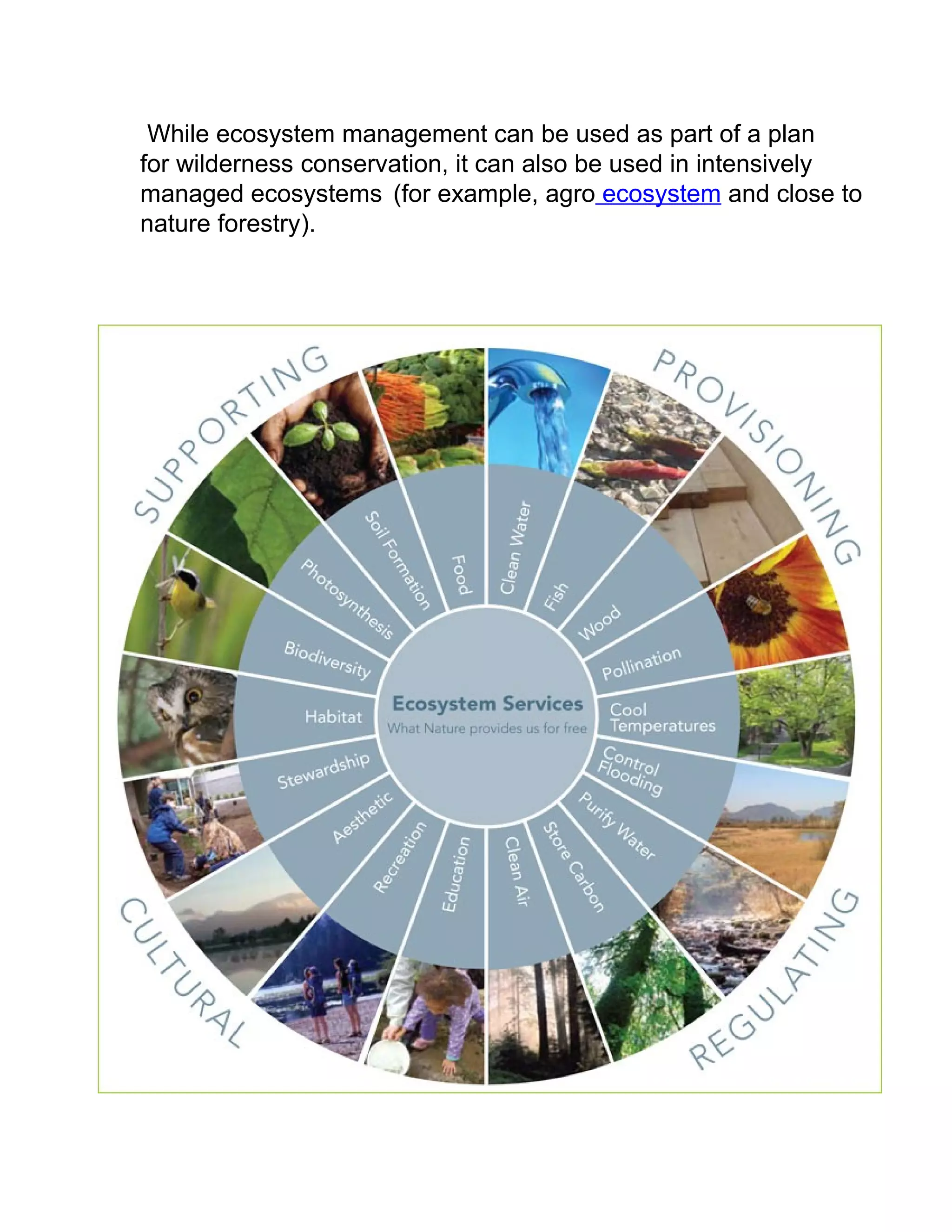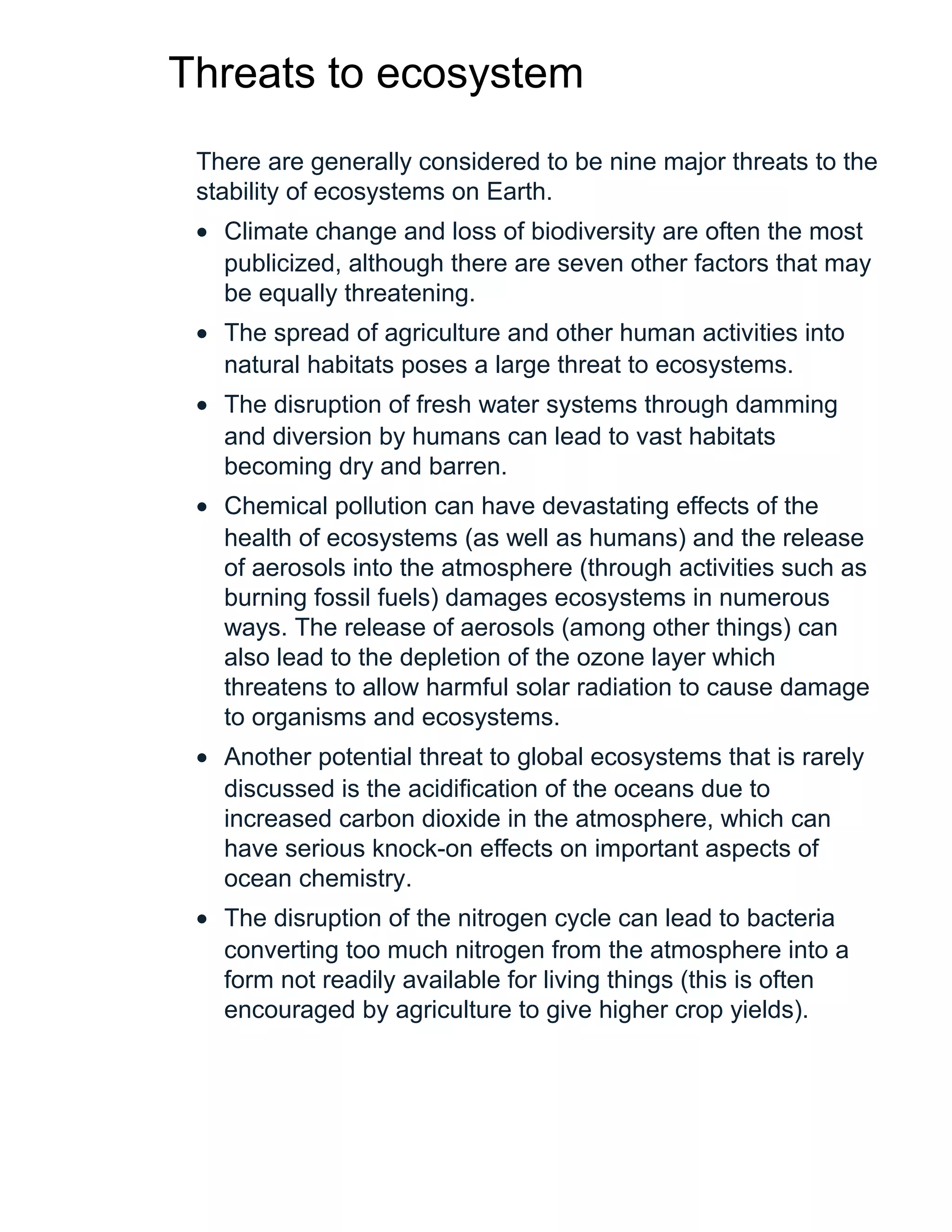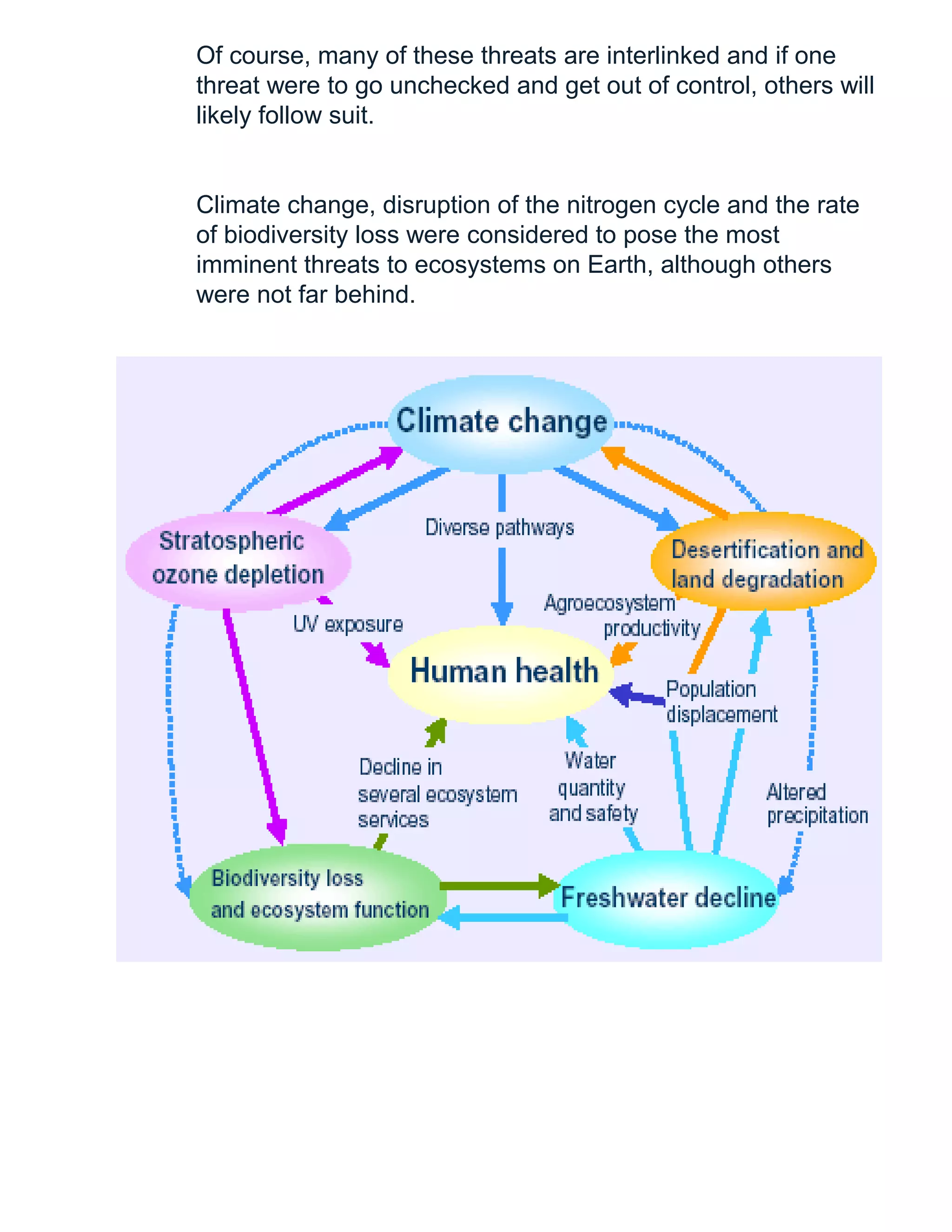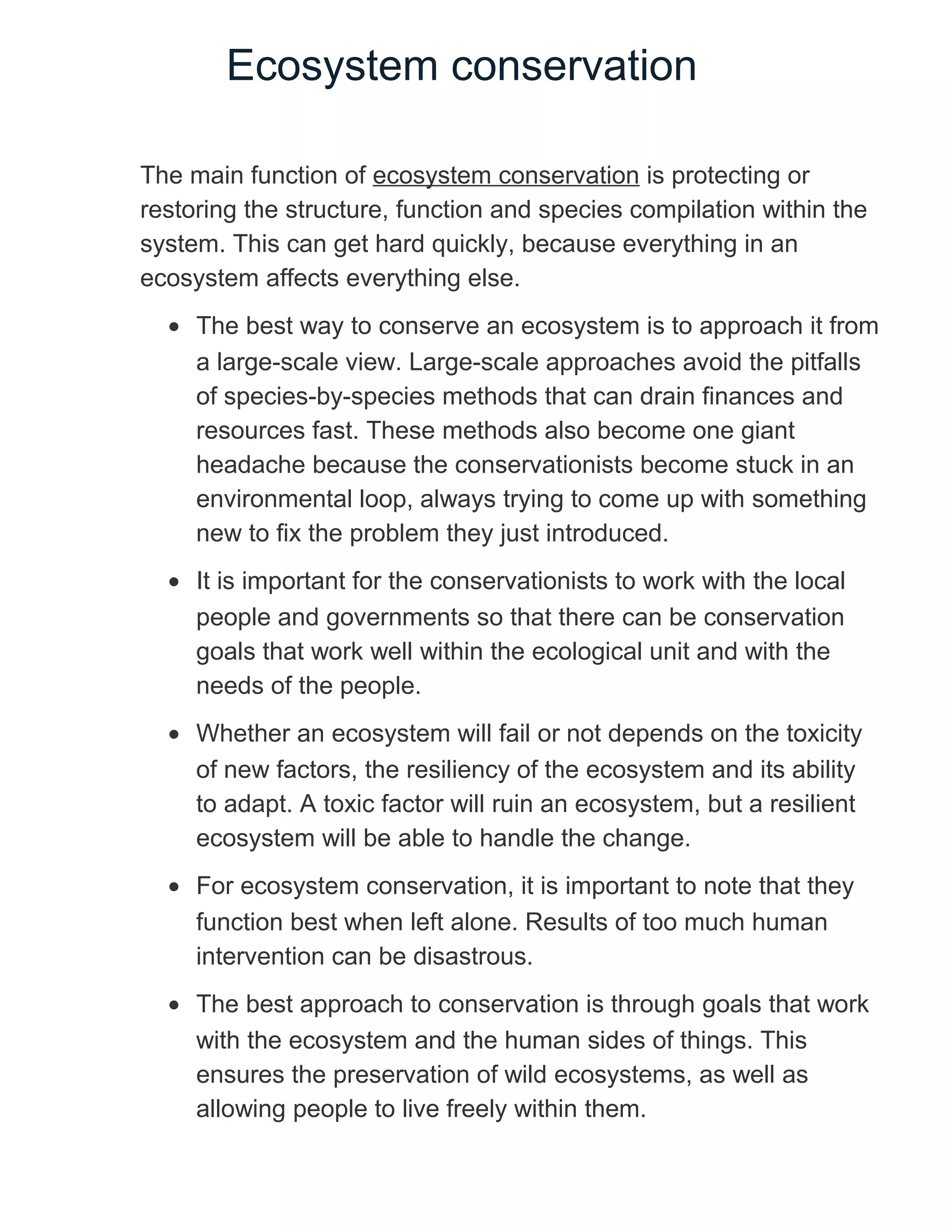This document discusses ecosystems and their conservation. It begins by defining an ecosystem as an area composed of biotic and abiotic factors that includes a biological community and its physical environment. It then discusses the importance of conserving ecosystems and biodiversity, as well as some of the threats they face from human activities and natural calamities. The document provides information on different types of ecosystems like forests, deserts, grasslands, and aquatic ecosystems. It highlights the roles of ecosystems and the need for their conservation.


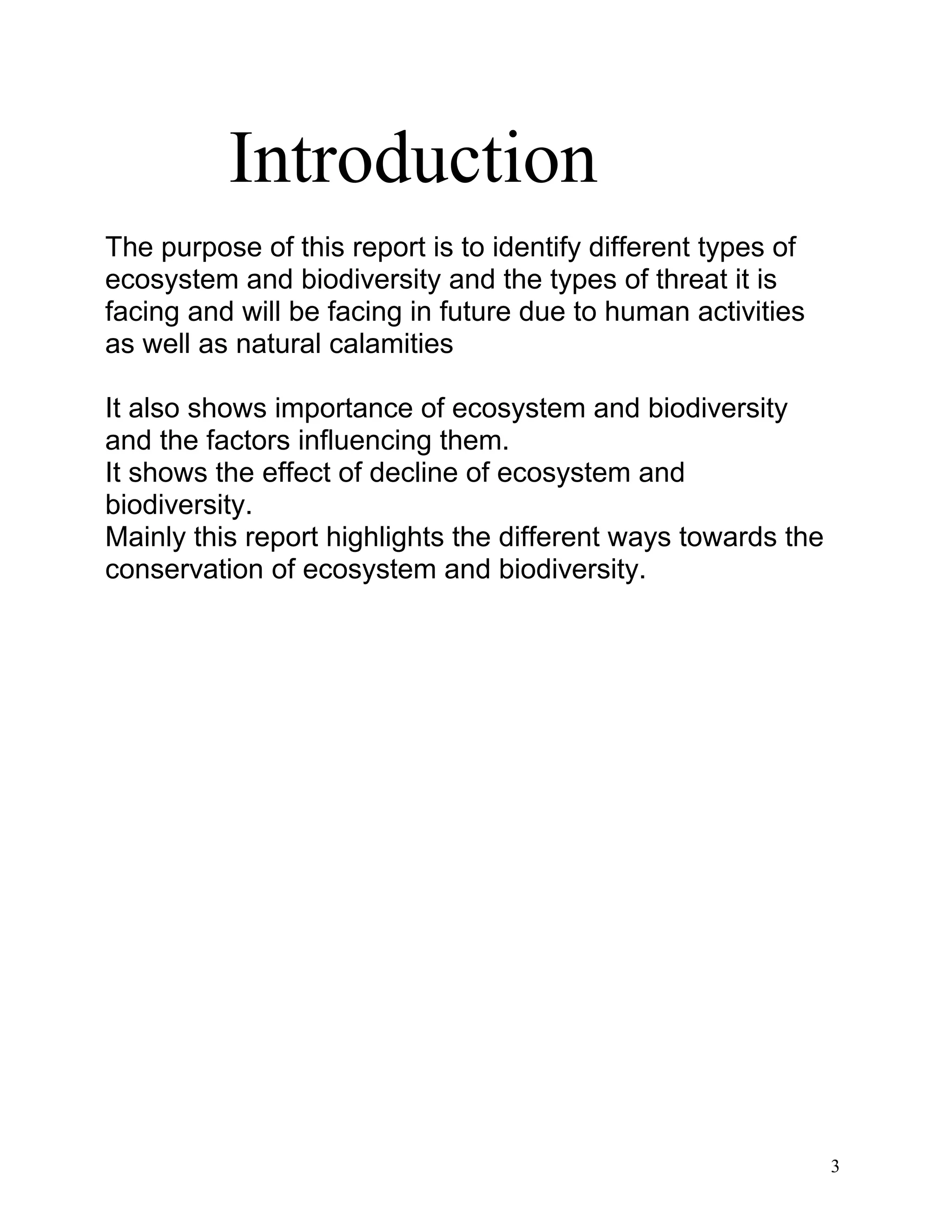
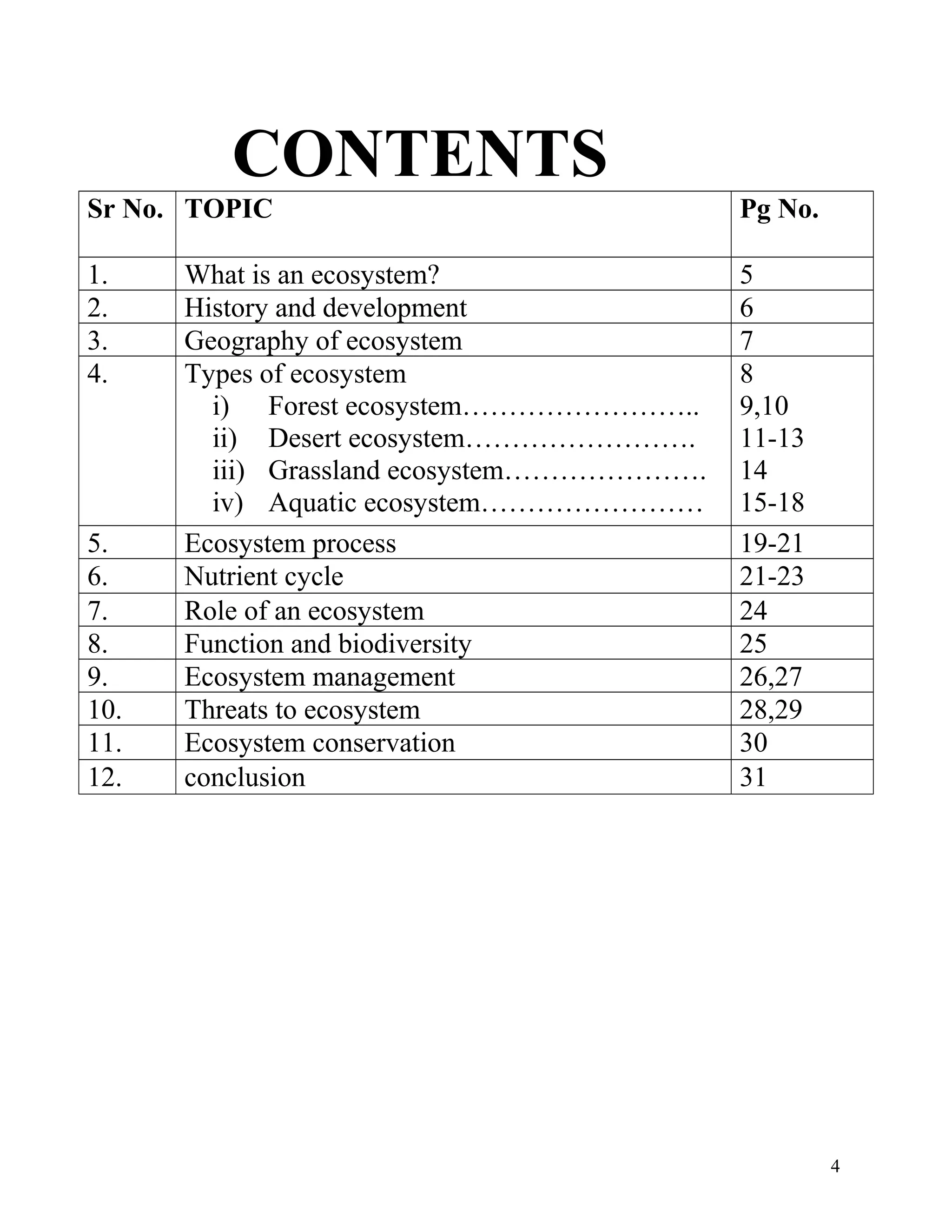
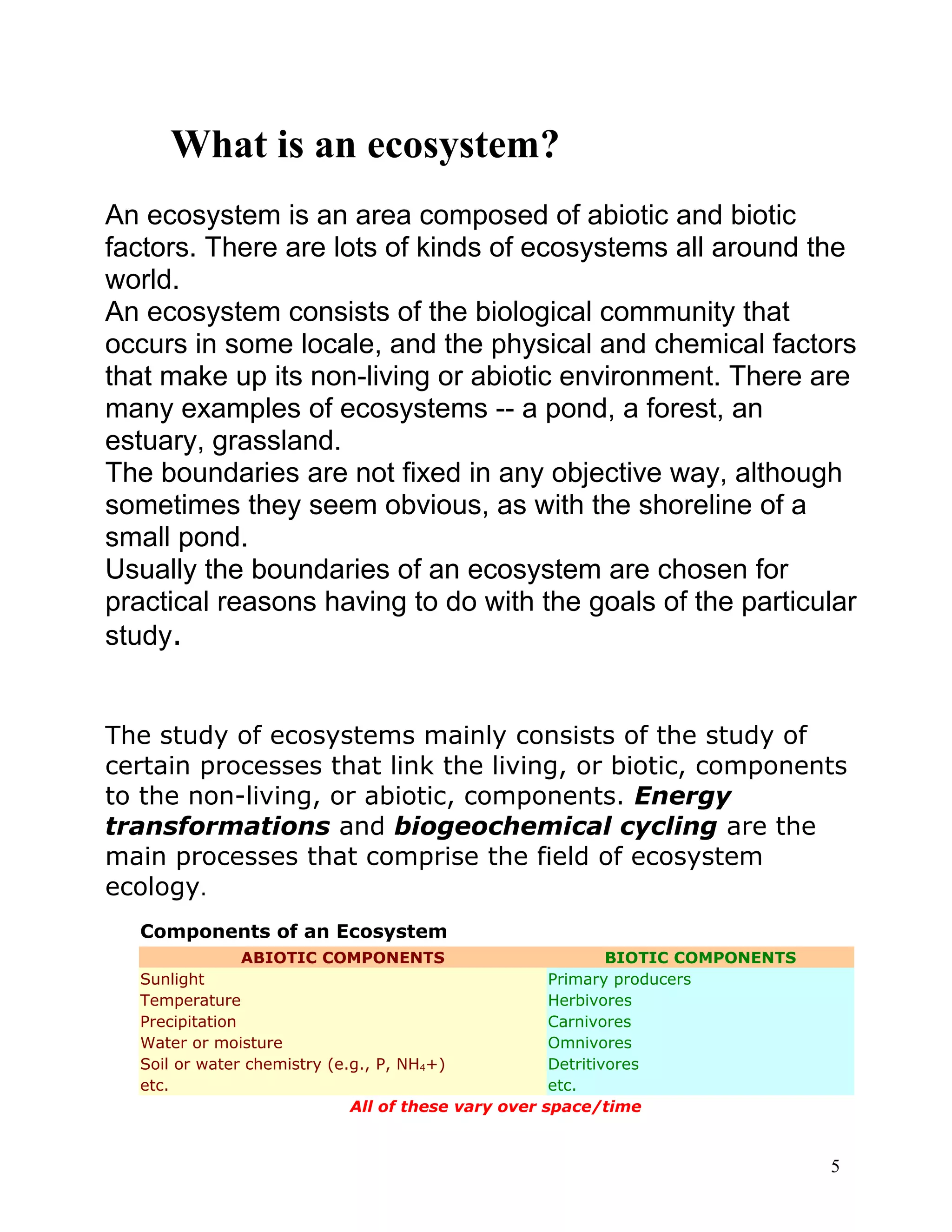
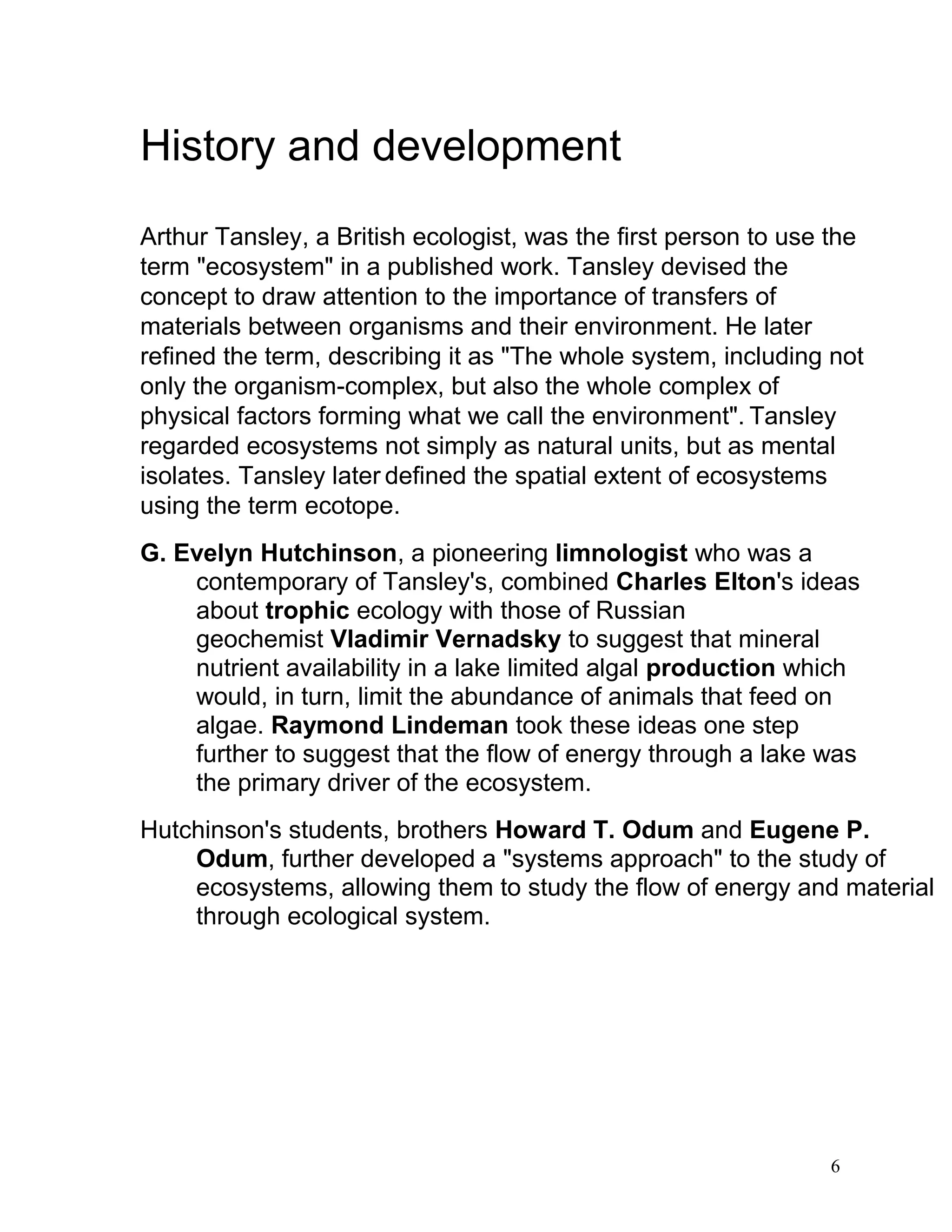
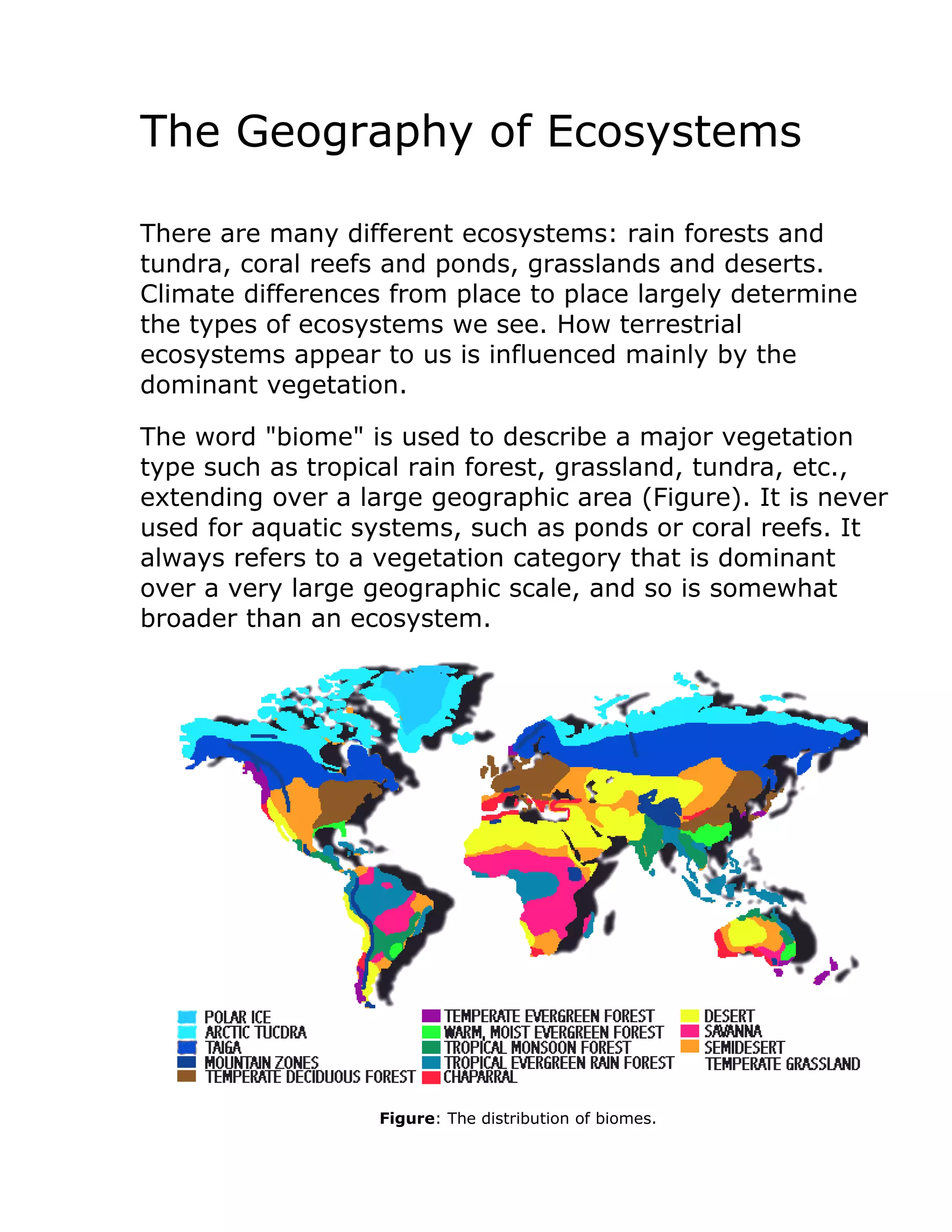
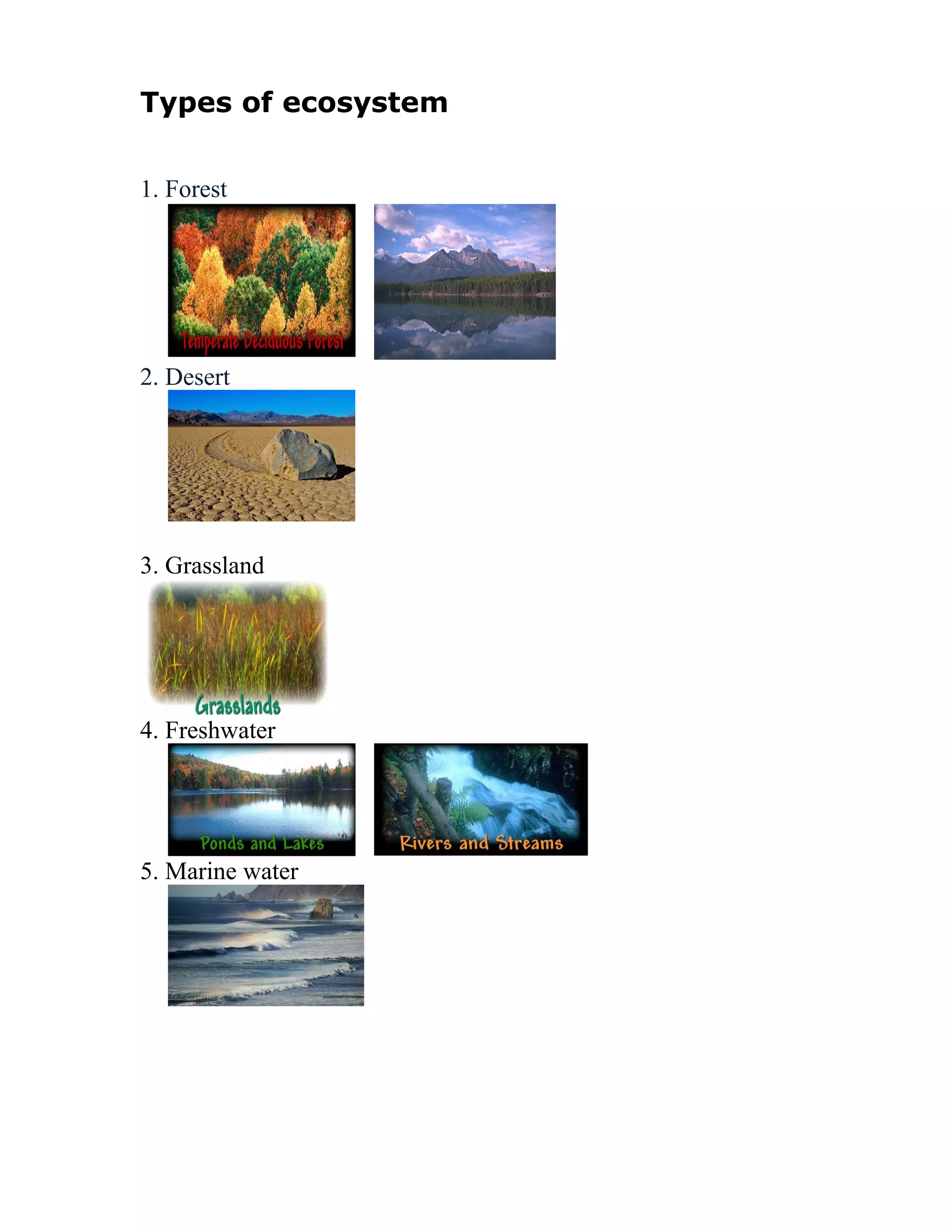

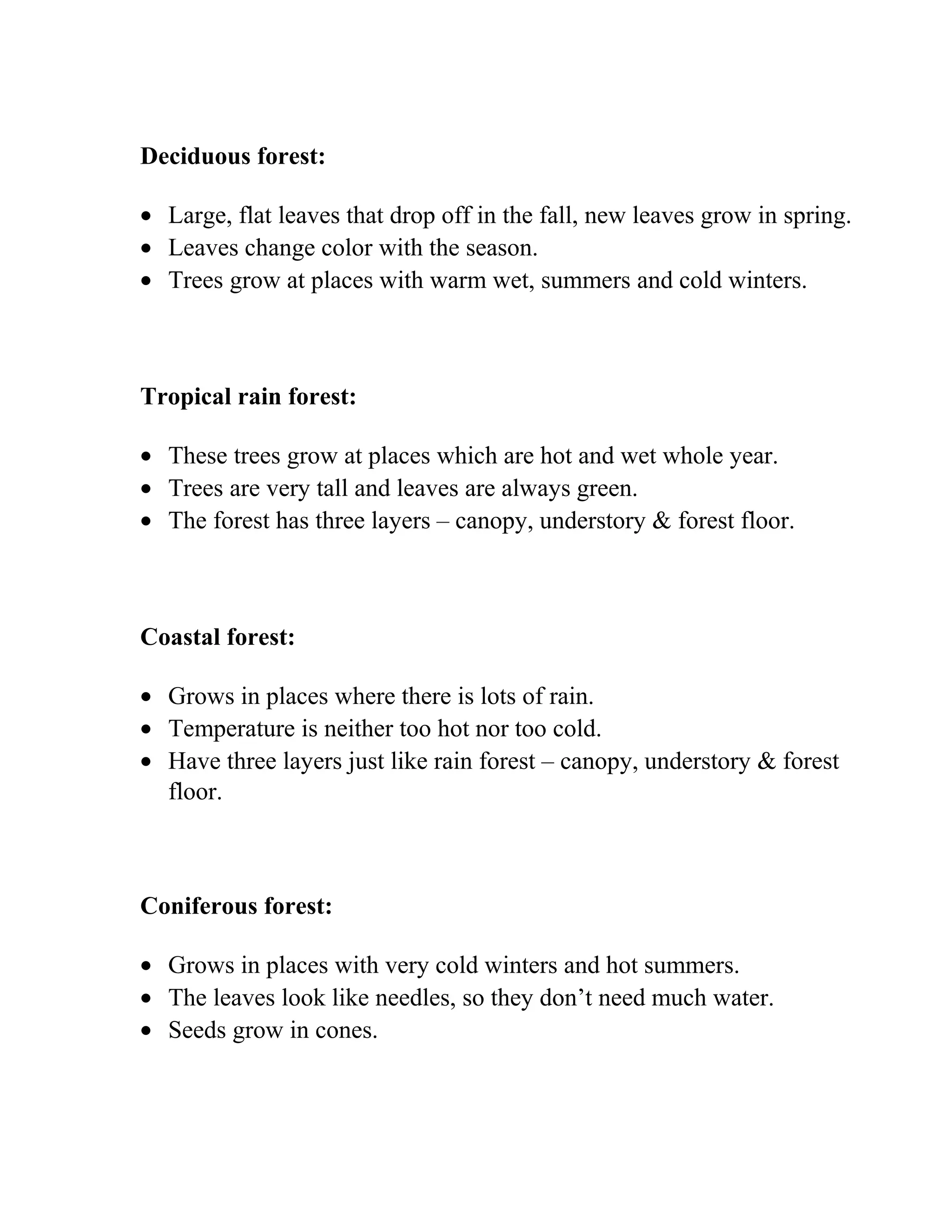

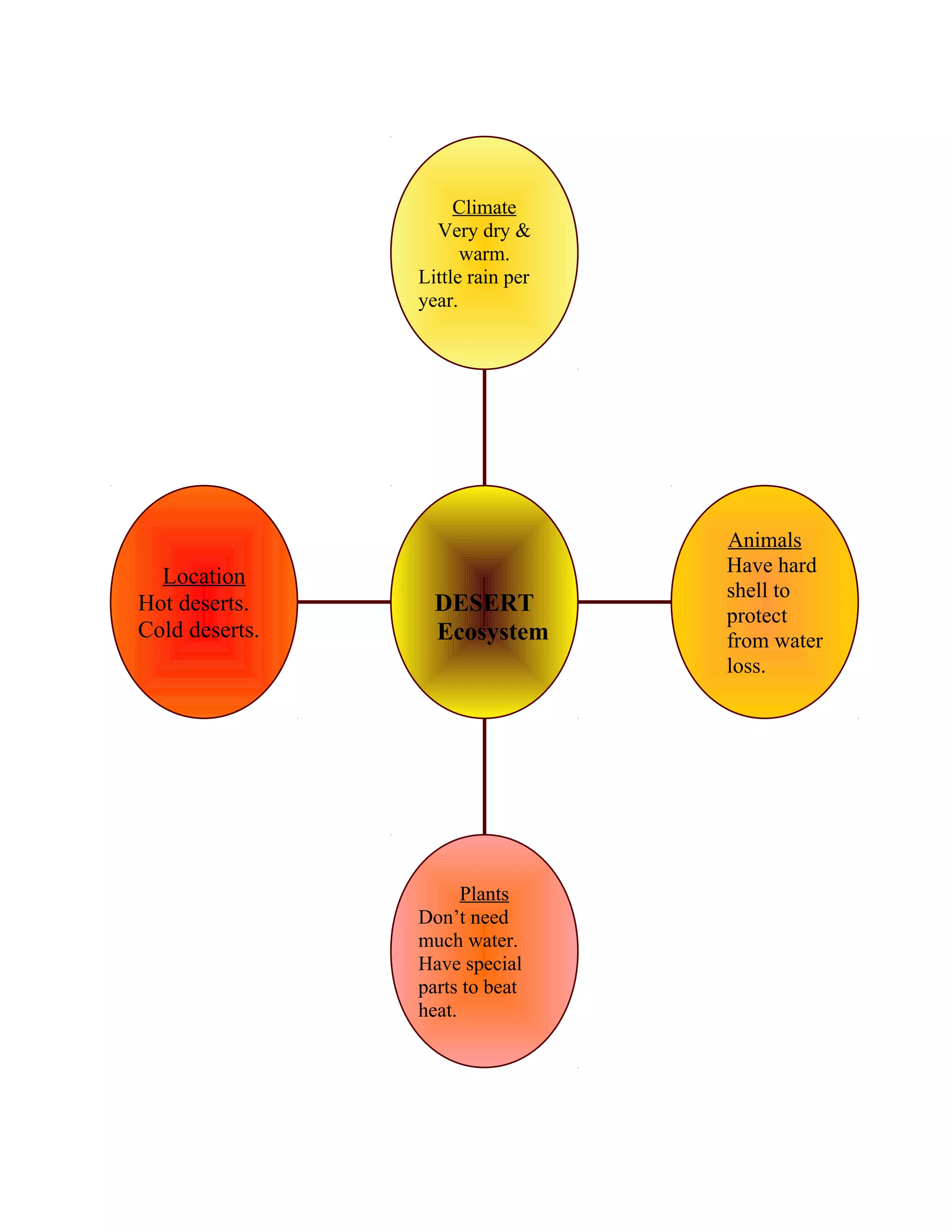
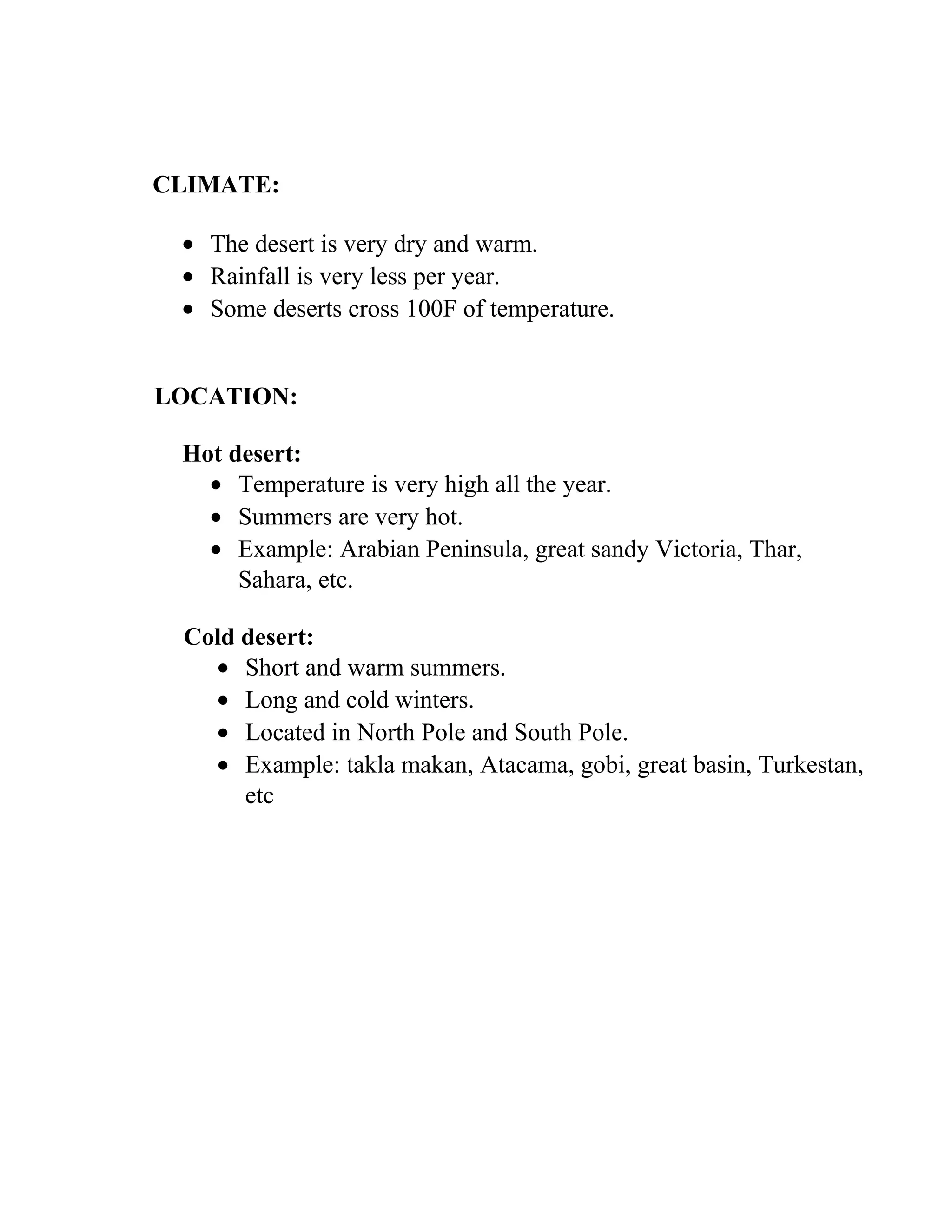

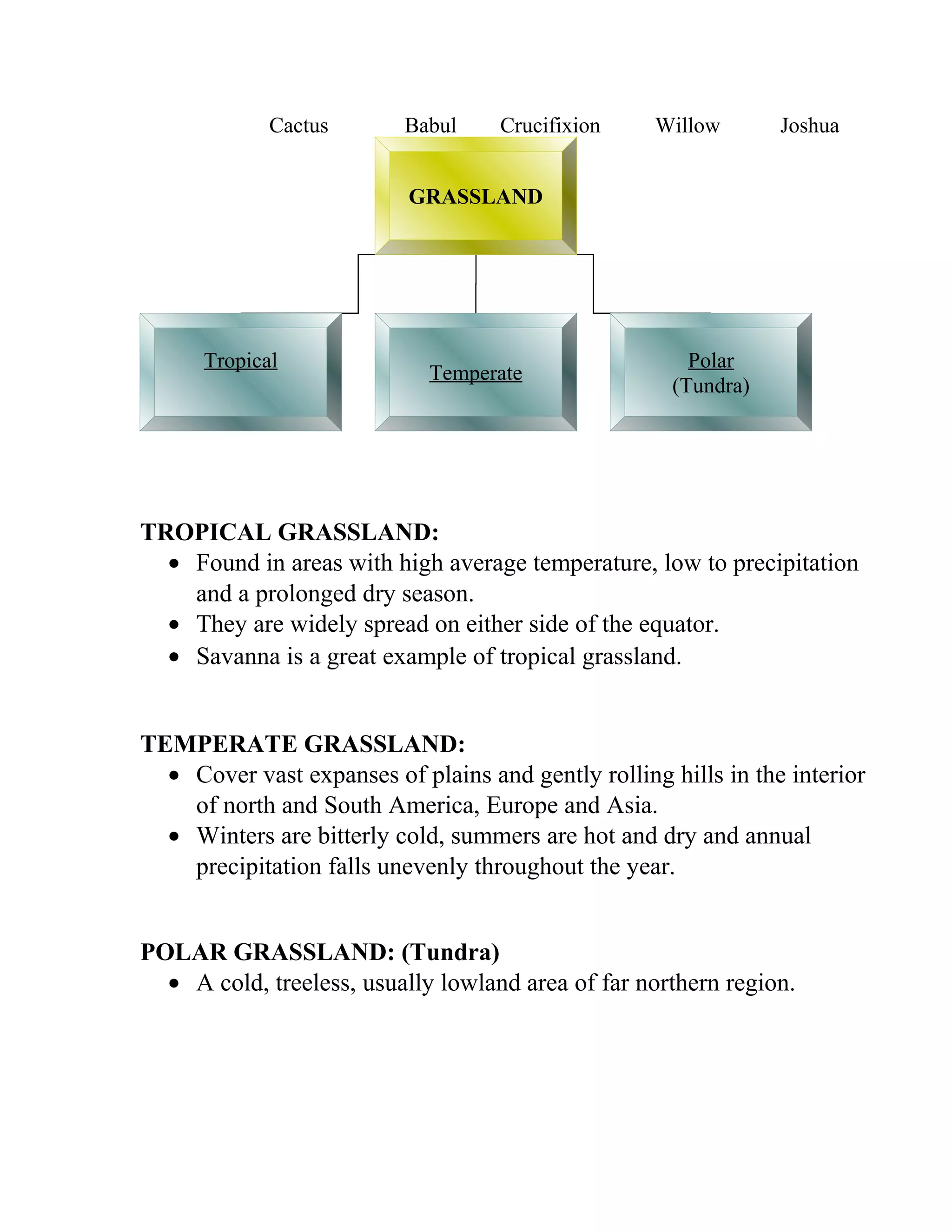

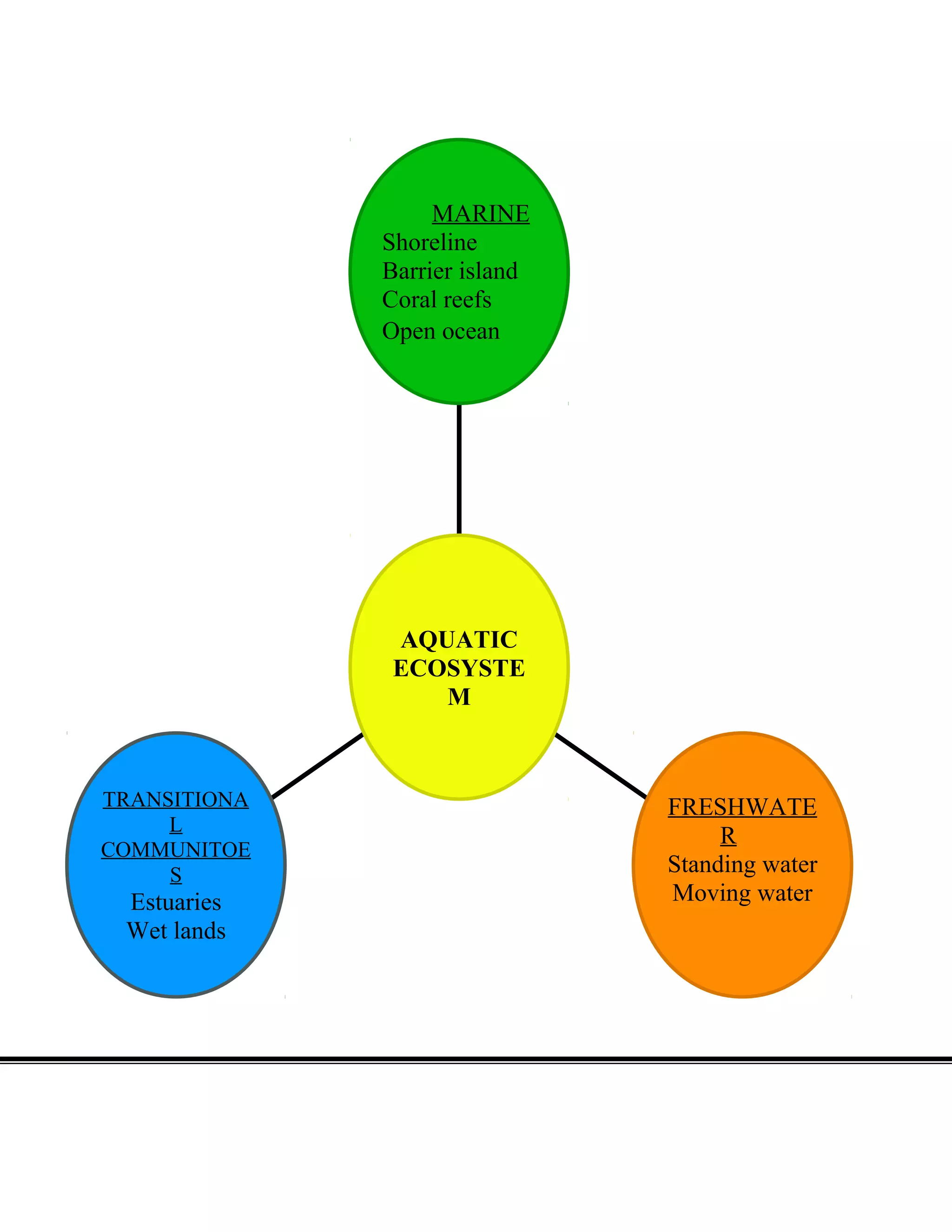
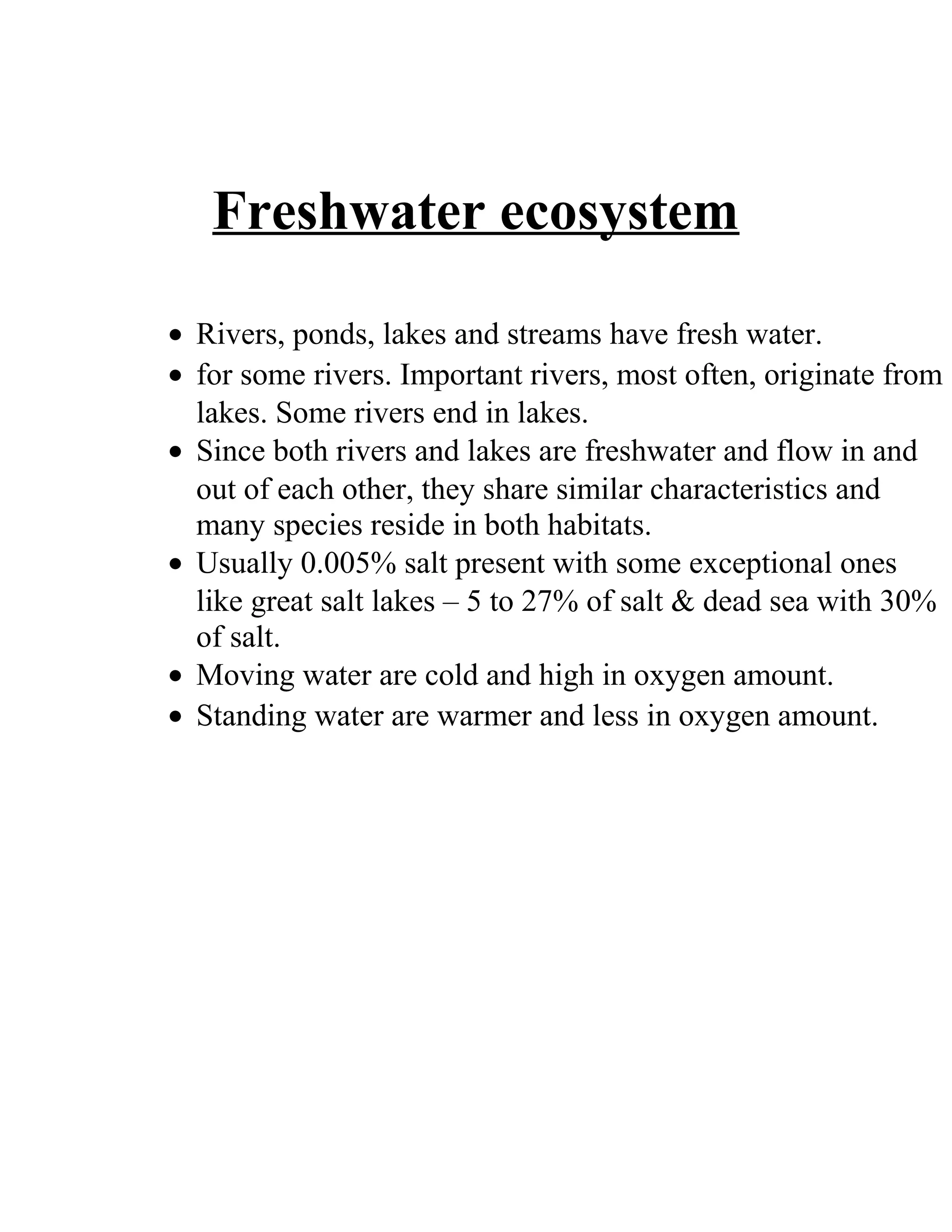
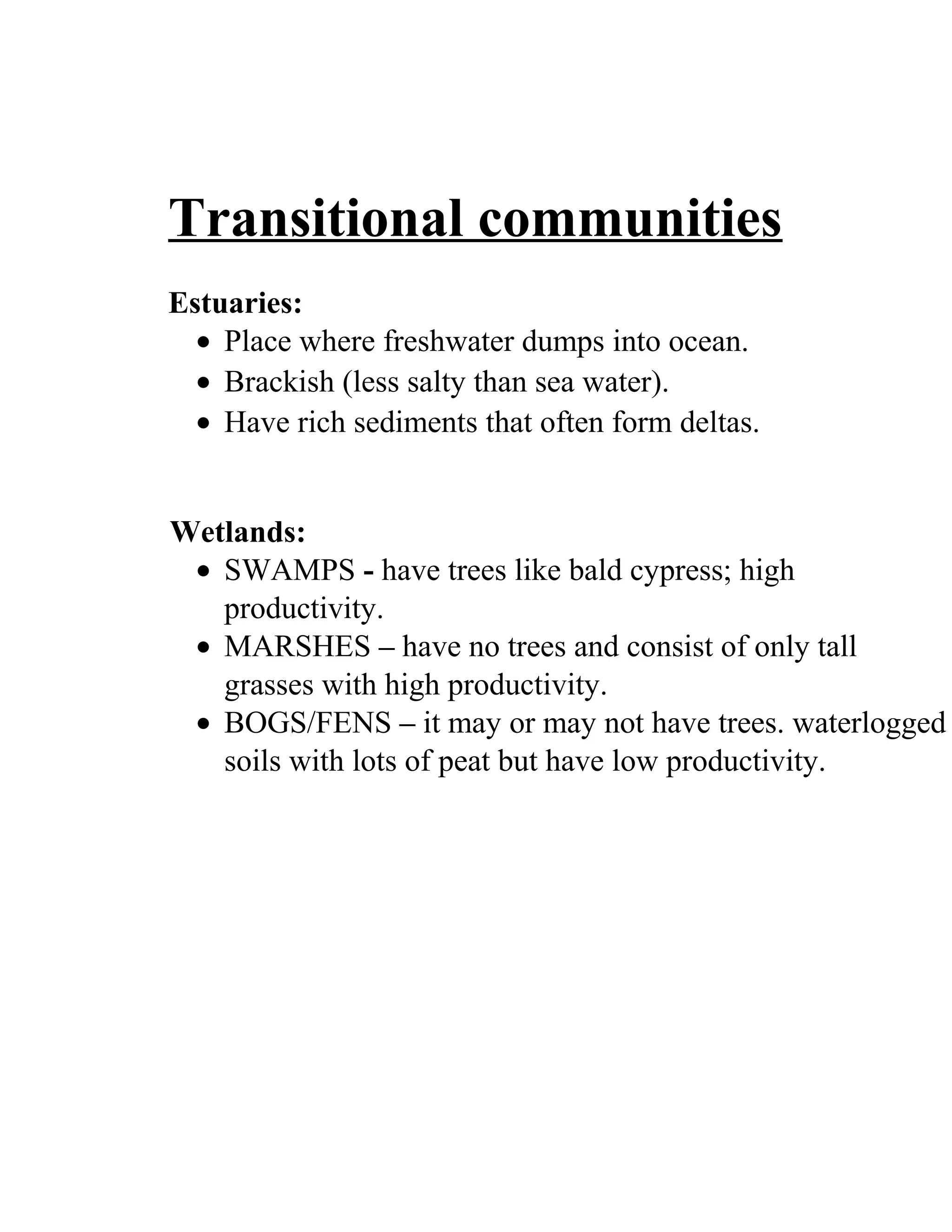
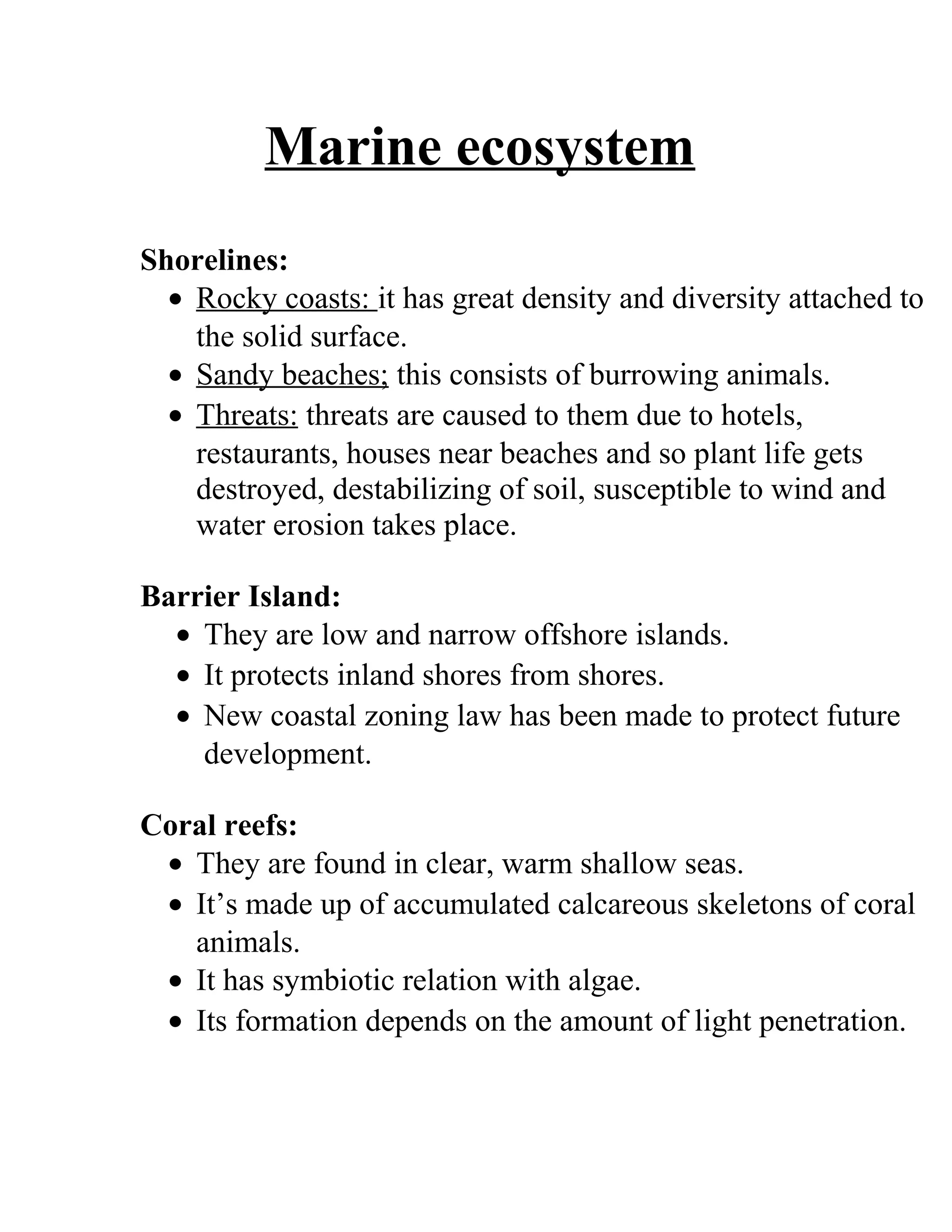

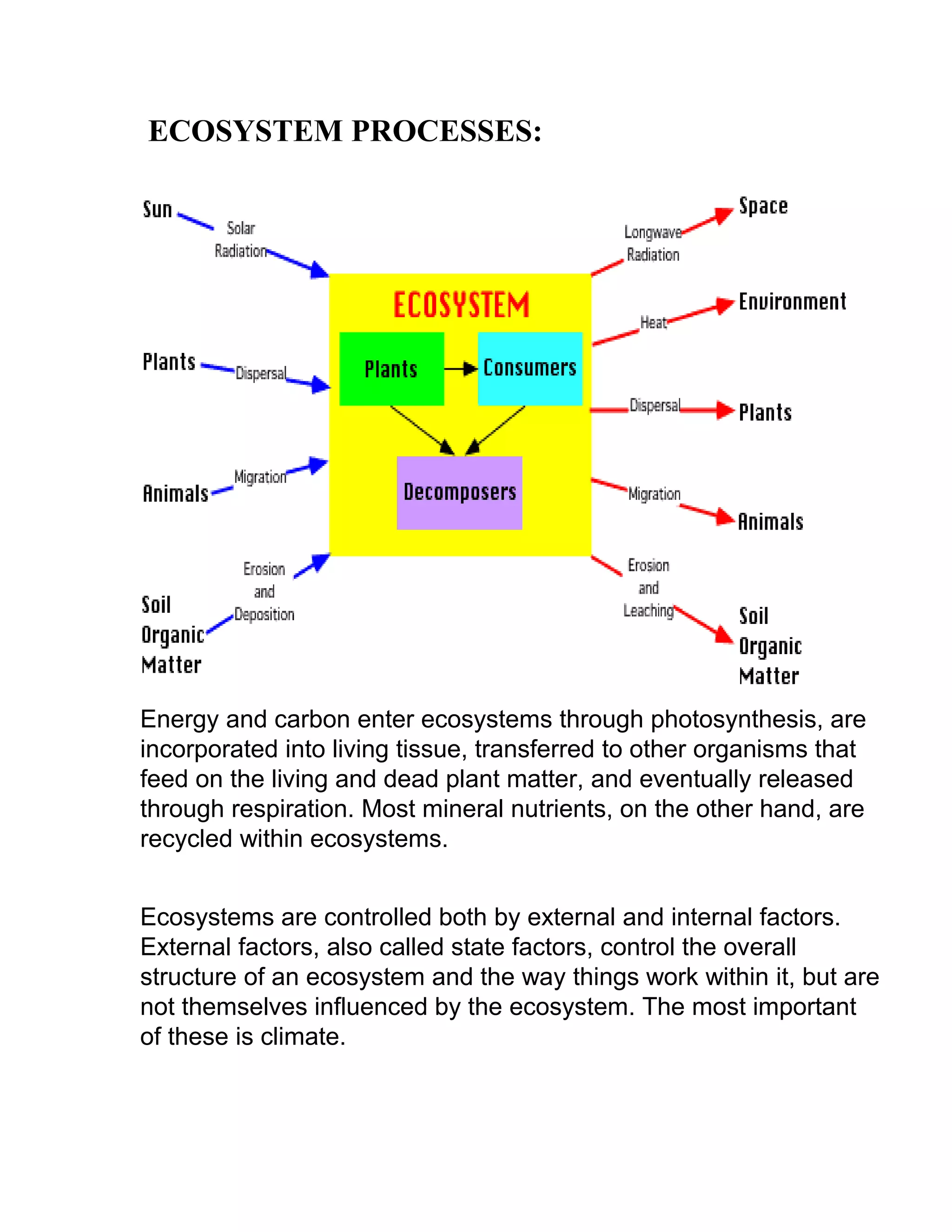
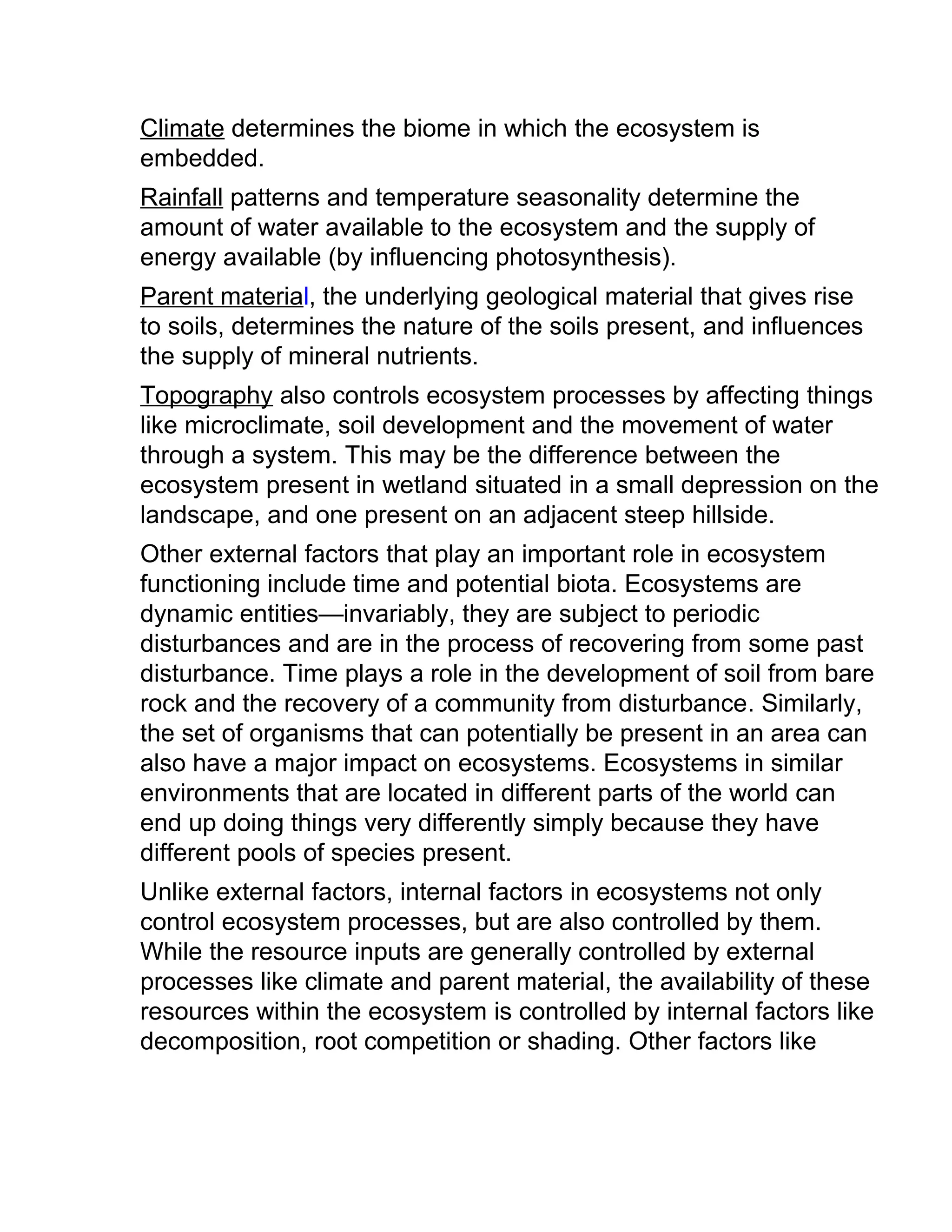


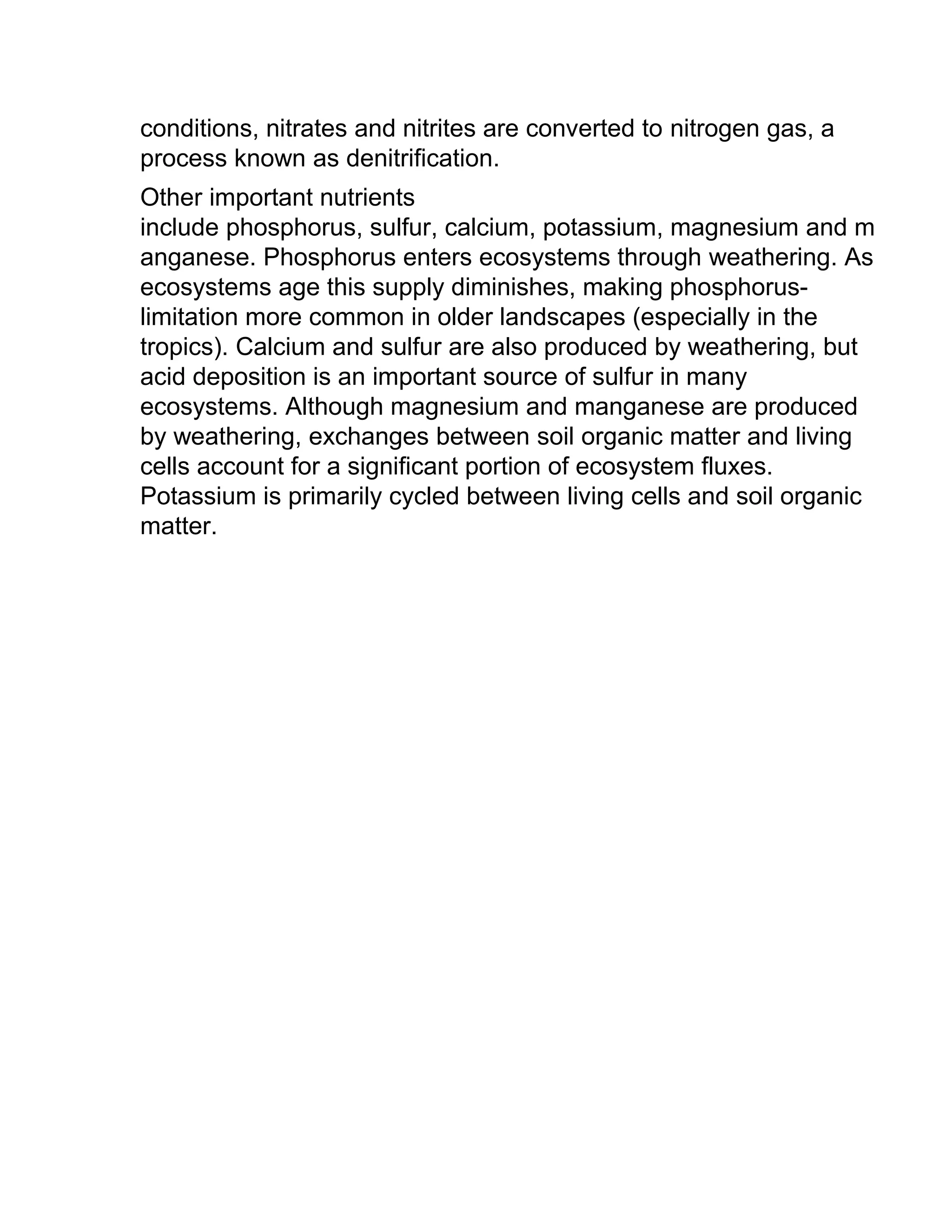
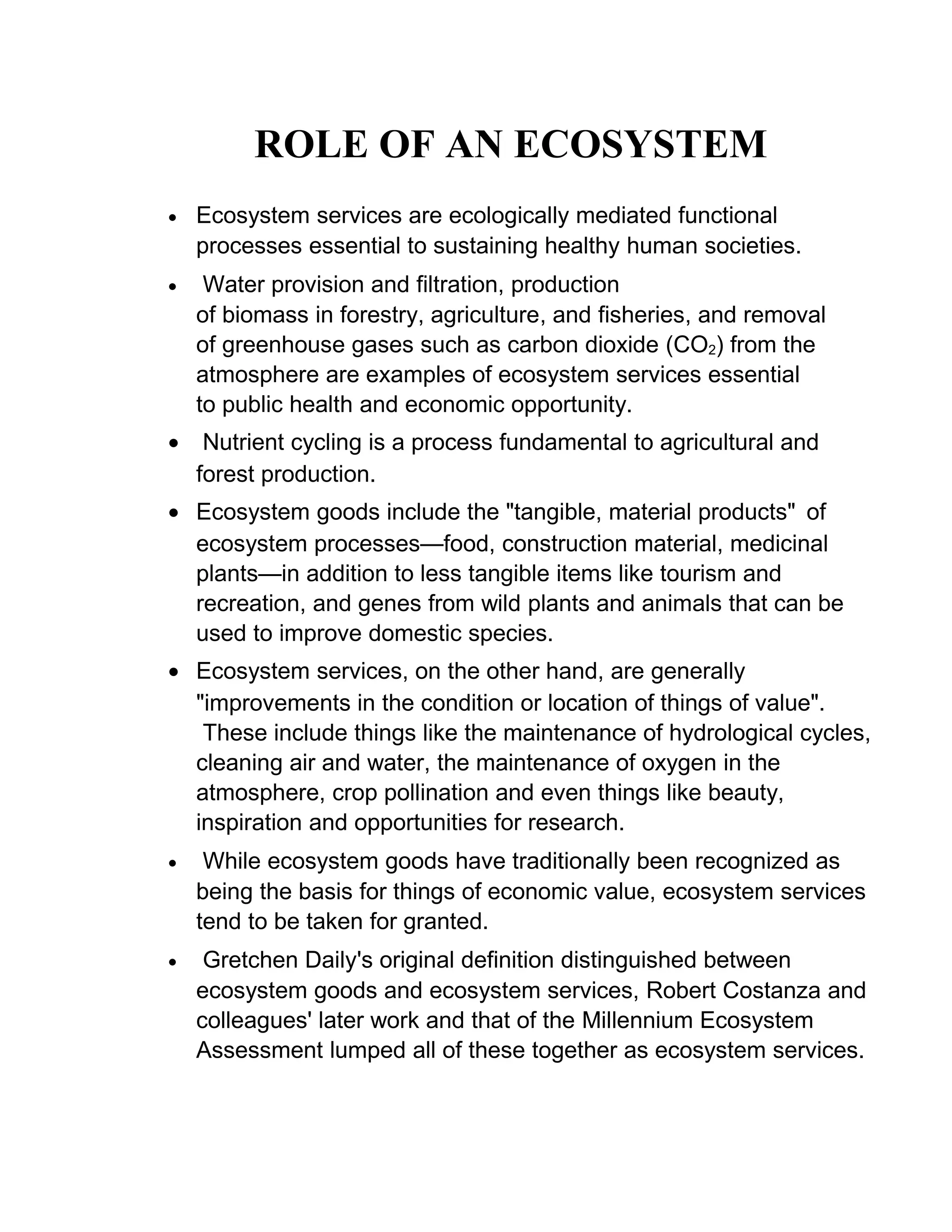
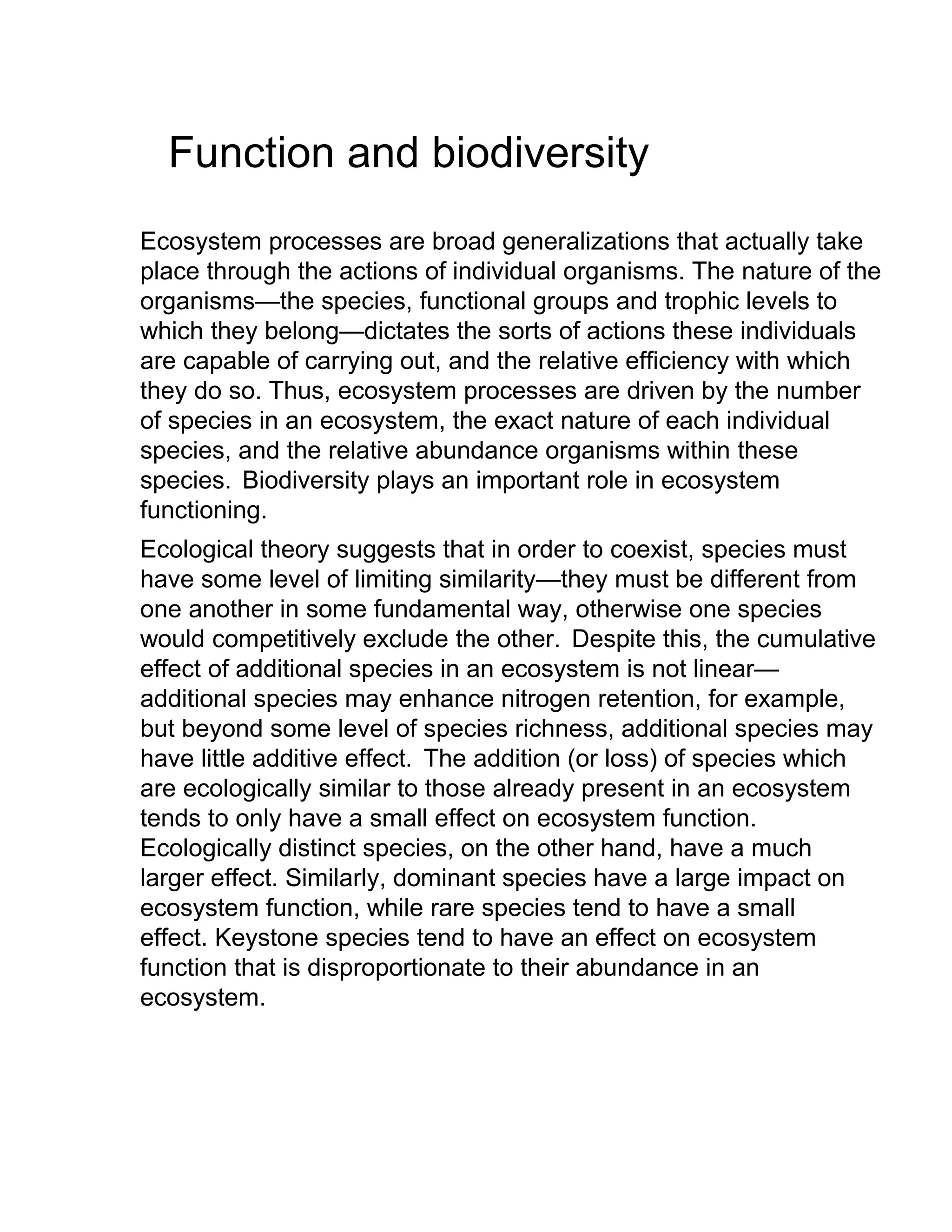
![Ecosystem management
When natural resource management is applied to whole
ecosystems, rather than single species, it is termed ecosystem
management.
A variety of definitions exist: F. Stuart Chapin and coauthors
define it as "the application of ecological science to resource
management to promote long-term sustainability of ecosystems
and the delivery of essential ecosystem goods and services", while
Norman Christensen and coauthors defined it as "management
driven by explicit goals, executed by policies, protocols, and
practices, and made adaptable by monitoring and research based
on our best understanding of the ecological interactions and
processes necessary to sustain ecosystem structure and function"
and Peter Brussard and colleagues defined it as "managing areas
at various scales in such a way that ecosystem services and
biological resources are preserved while appropriate human use
and options for livelihood are sustained".
Although definitions of ecosystem management abound, there is a
common set of principles which underlie these definitions.
A fundamental principle is the long-term sustainability of the
production of goods and services by the ecosystem;
"intergenerational sustainability [is] a precondition for
management, not an afterthought".
It also requires clear goals with respect to future trajectories and
behaviors of the system being managed.
Other important requirements include a sound ecological
understanding of the system, including connectedness, ecological
dynamics and the context in which the system is embedded.
Other important principles include an understanding of the role of
humans as components of the ecosystems and the use of adaptive
management.](https://image.slidesharecdn.com/ecosystem-150912135044-lva1-app6891/75/Ecosystem-29-2048.jpg)
